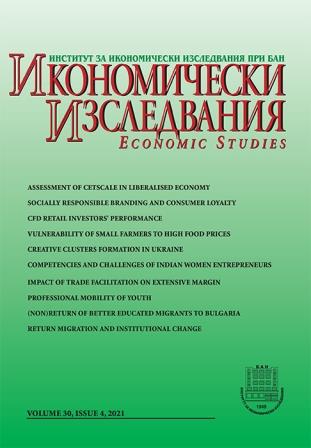Vulnerability of Small Farmers to High Food Prices – A Case Study of Indian Farmers
Vulnerability of Small Farmers to High Food Prices – A Case Study of Indian Farmers
Author(s): Juhee Singh Verma, Pritee SharmaSubject(s): Economy, Agriculture
Published by: Институт за икономически изследвания при Българска академия на науките
Keywords: Food Prices; Small Farmers; India; Vulnerability
Summary/Abstract: Food price spikes increase the vulnerability of poor, marginalized people to food insecurity and are often associated with landless rural or urban poor. Nevertheless, high food prices are commonly understood as instrumental in increasing farm incomes. For this reason, agriculture price policies are used to provide higher incomes to farmers. Income gains could be real for farmers with large landholdings but often attributed to all farmers without regard to their holding-size. Farmers with small holdings are typically net food buyers of essential food commodities and thus vulnerable to rising food prices. Fluctuations in food prices globally have increased the significance and the probable policy response to such price rise in recent years. Studies in different countries have revealed that household responses depend upon the region's market structure where the household is situated. However, the extent of vulnerability is rarely accessed in any such analysis.In this context, the present study uses India as a case study to understand the distributional impact of food prices on farm households and their vulnerability position. Many of these farm households are net food buyers such that the effect of high food prices is counterproductive for them. Results show that about sixty-four percent of producer households in India are net buyers of food, and nearly two-thirds of these lie in the lowest quintile. Around one-third of these agriculture households are significant food buyers, further increasing their vulnerability to high food prices. Short-term policy interventions like income transfers and, in the long run, better livelihood opportunities in other sectors would be required to shield such farmers from the detrimental effect of increased crop prices. Results also suggest the need for reexamining the role of price policy instruments as a tool to increase the incomes of all farmers in India.
Journal: Икономически изследвания
- Issue Year: 2021
- Issue No: 4
- Page Range: 74-88
- Page Count: 15
- Language: English

